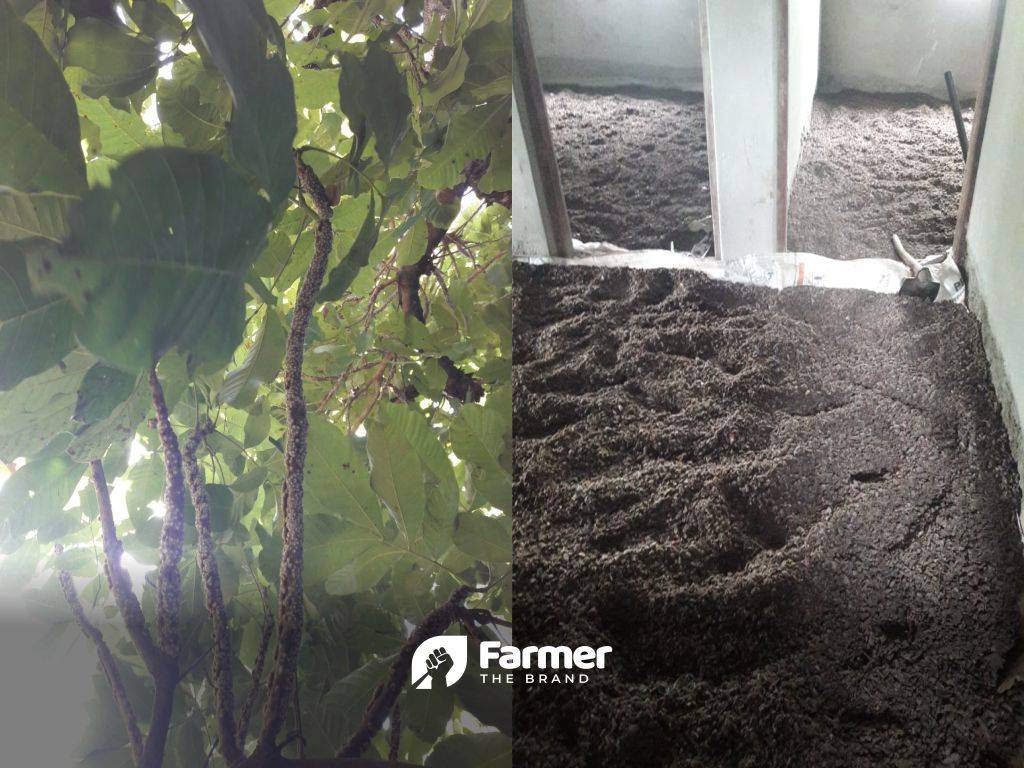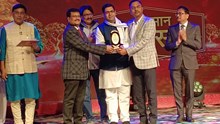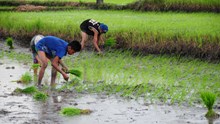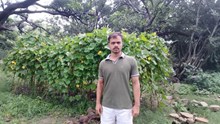
Milan Singh Vishwakarma is a Lac farmer, resident of Bagbahra tehsil, Mahasamund district, Chhattisgarh. He talks of not being highly educated having done his Senior Secondary education. He started lac farming in 2003 and has been a lac farmer since.
In 2003, scientists of IINRG (INDIAN INSTITUTE OF NATURAL RESINS & GUMS) came to his village and started a training course in Lac production. He got interested about Lac farming and went to IINRG Ranchi in 2005, for 7-day training. What he learnt from this training he started implementing practically. He faced some problems initially mainly from enemy pests and insects, which have to be guarded against in any lac plantation. There was no production at all. In time he found solution to his problems and kept making progress.
Lac farming is done with the help of insects. The insects secret this scarlet raisin which can be collected from the infected branches. Lac is of two types "rangini" and "kusumi". Rangini Lac is produced by Butea monosperma (palas), Ziziphus mauritiana (ber), Acacia catcchu (Khair) and Ficus religiosa (peepul) trees. The cycle of producing rangini lac is 4 months or 8 months. It's cheaper than kusumi Lac and fetches lower price. In addition, it's not as productive as kusumi. Kusumi lac can be harvested twice in a year and is produced on Schleichera oleosa (kusum) trees, hence the name kusumi lac. The nurse trees that they use with these lac trees are ber, semialata, bhalia, galwang and khair. He has been farming mostly kusumi lac. There is much more profit in Kusumi lac than in Rangini lac.

In 10 acres he has planted 40,000 semialata plants, 1200 ber plants, 500 kusum plants and others. He leases more farming land from local farmers when required. The process of lac growing is very complex. There are lots of threat from enemy insects who are handled with 2-3 types of sprays, which are used after 30, 40 and 60 days initially. Then after pruning and trimming the trees are ready for lac growing, however the trees are ready for this at different ages. Kusum trees are ready in 6 months, semialata in 1 year and keet sancharan (insect transmission) is performed. They tie these in bundles to tree branches and child insects keep taking up space on the trees. Around 10 gram of the Broodlac (Beehan lac or Beej lac) bundle is tied to the branches. These are treated before use with sprays like indoxacarb pesticide, piperonyl pesticide or carbendazim fungicide. The broodlacs are dipped into these for improvement. This is similar to beej upchar (seed treatment). The main reason for doing this is to kill enemy insects or pests which if added to the trees with broodlac can adversely affect your plants. Every effort is made to avoid this and cut off the current generation of the enemy insects. They tie the broodlac to the soft and juicy branches and we leave them alone for 21 days, after which the insect has made the branch its home and is well set. The next step is taking out the funkey lac.
He said he wanted to share some details about lac farming with the viewers and anyone interested in making lac farming their occupation can come in contact with him. Farmers working with paddy production, vegetable growing or gardening can take up lac farming as their side business to earn extra income.

There are methods and processes which we have to use or follow in farming lac. Like every living being these insects need food. The child insect requires juice which it gets from the soft branches it is on, and hence starts its lifecycle which goes on for months. They start with pruning from 15th January and continue till 15th February. The small, old and weak branches are chopped off, and he waits for a year and a half for the branch to grow to a meter or bigger in length. This method is for kusumi lac.
For lac from ber trees, the chopping process starts from 15 March and continues till 15 April. This tree grows to its full size in 6 months unlike kusum which takes one and a half year.
Semialata is also used to grow lac, but it needs huge area for farming with good irrigation facilities. These are planted 1x1 and around 4,000 plants are planted over an acre. This plant is looked after and grown for a year. After completion of a year the insects are added to the ripe tree branches. After some time we take the funkey lac from the tree or the insect can pass on to other crops for next season and damage them. Third step is spraying pesticides and fungicides. These are prepared by adding drops of chemicals to water and these kill all insects and kill and avoid fungi. He repeated the time period over which these are sprayed. Please click here to see the video for yourself.


















Share your comments